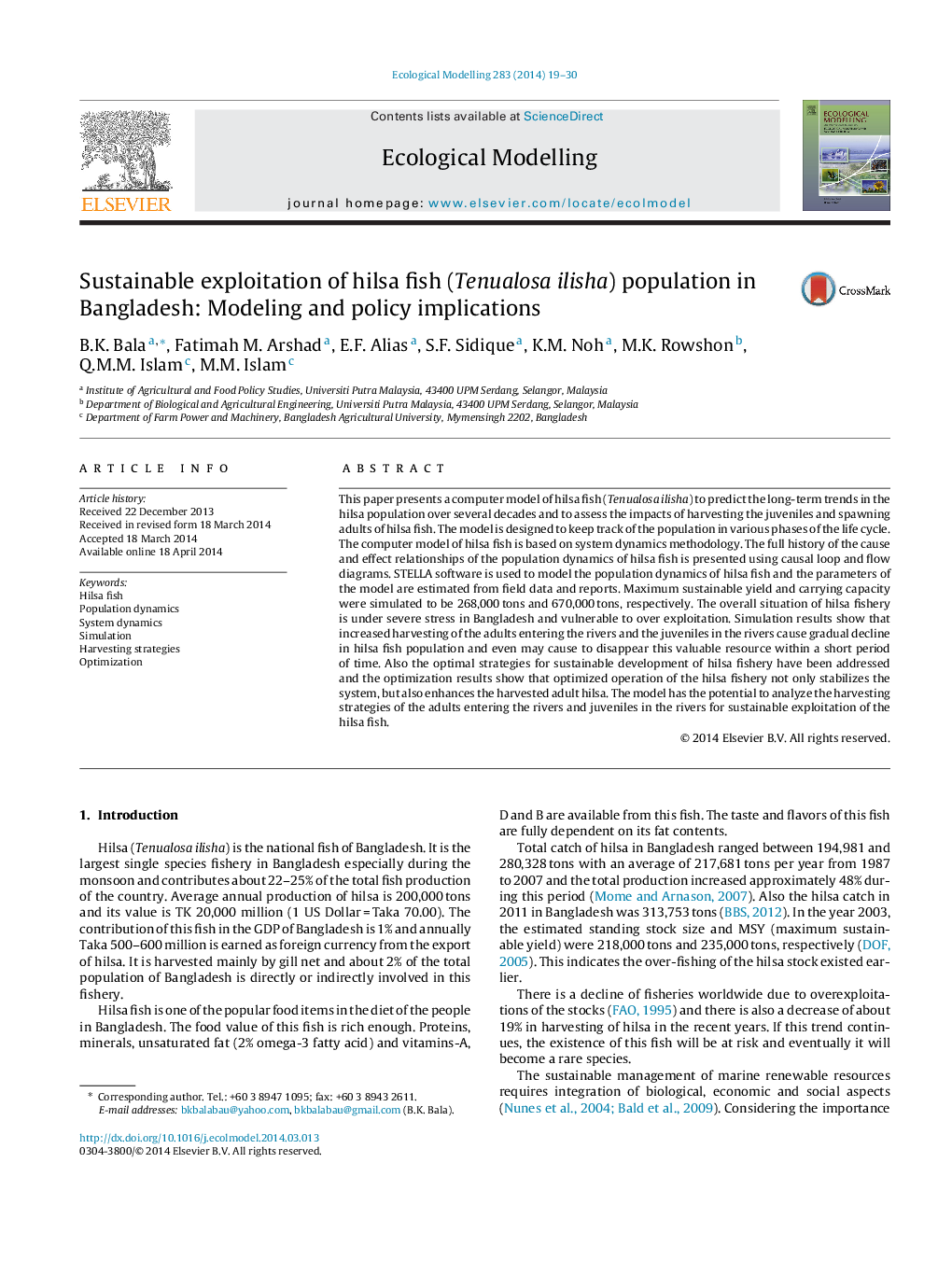| Article ID | Journal | Published Year | Pages | File Type |
|---|---|---|---|---|
| 4375929 | Ecological Modelling | 2014 | 12 Pages |
•We developed a system dynamics model to predict population dynamics of hilsa fish.•We explored the optimal management strategies of hilsa fish.•The key strategies are harvesting of juveniles and spawning adults.•Optimal policy enhances the harvested adult hilsa and ensures stability.•This model of hilsa fish can aid in scenario planning for hilsa fishery management.
This paper presents a computer model of hilsa fish (Tenualosa ilisha) to predict the long-term trends in the hilsa population over several decades and to assess the impacts of harvesting the juveniles and spawning adults of hilsa fish. The model is designed to keep track of the population in various phases of the life cycle. The computer model of hilsa fish is based on system dynamics methodology. The full history of the cause and effect relationships of the population dynamics of hilsa fish is presented using causal loop and flow diagrams. STELLA software is used to model the population dynamics of hilsa fish and the parameters of the model are estimated from field data and reports. Maximum sustainable yield and carrying capacity were simulated to be 268,000 tons and 670,000 tons, respectively. The overall situation of hilsa fishery is under severe stress in Bangladesh and vulnerable to over exploitation. Simulation results show that increased harvesting of the adults entering the rivers and the juveniles in the rivers cause gradual decline in hilsa fish population and even may cause to disappear this valuable resource within a short period of time. Also the optimal strategies for sustainable development of hilsa fishery have been addressed and the optimization results show that optimized operation of the hilsa fishery not only stabilizes the system, but also enhances the harvested adult hilsa. The model has the potential to analyze the harvesting strategies of the adults entering the rivers and juveniles in the rivers for sustainable exploitation of the hilsa fish.
